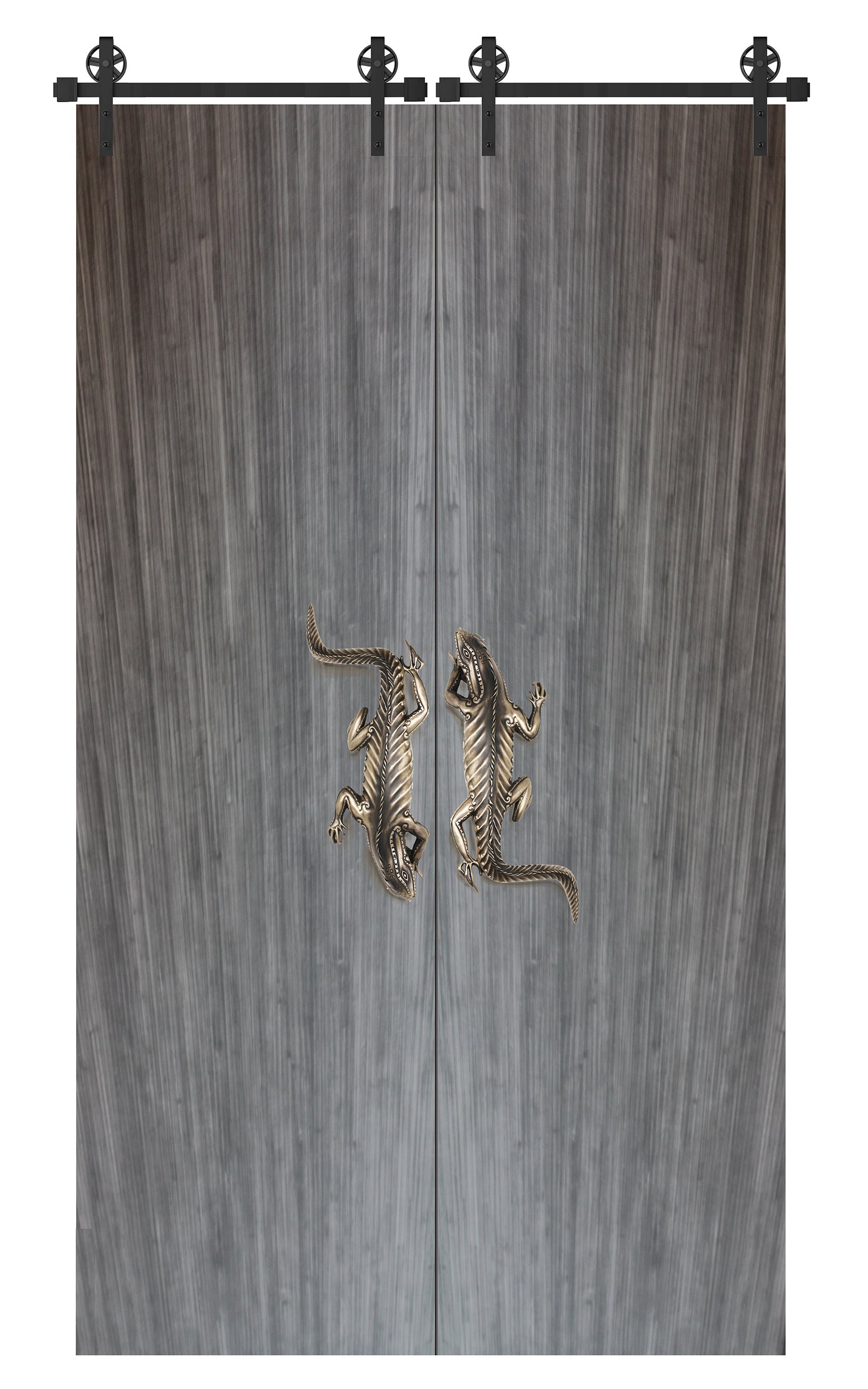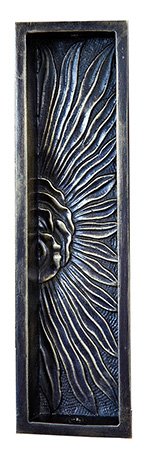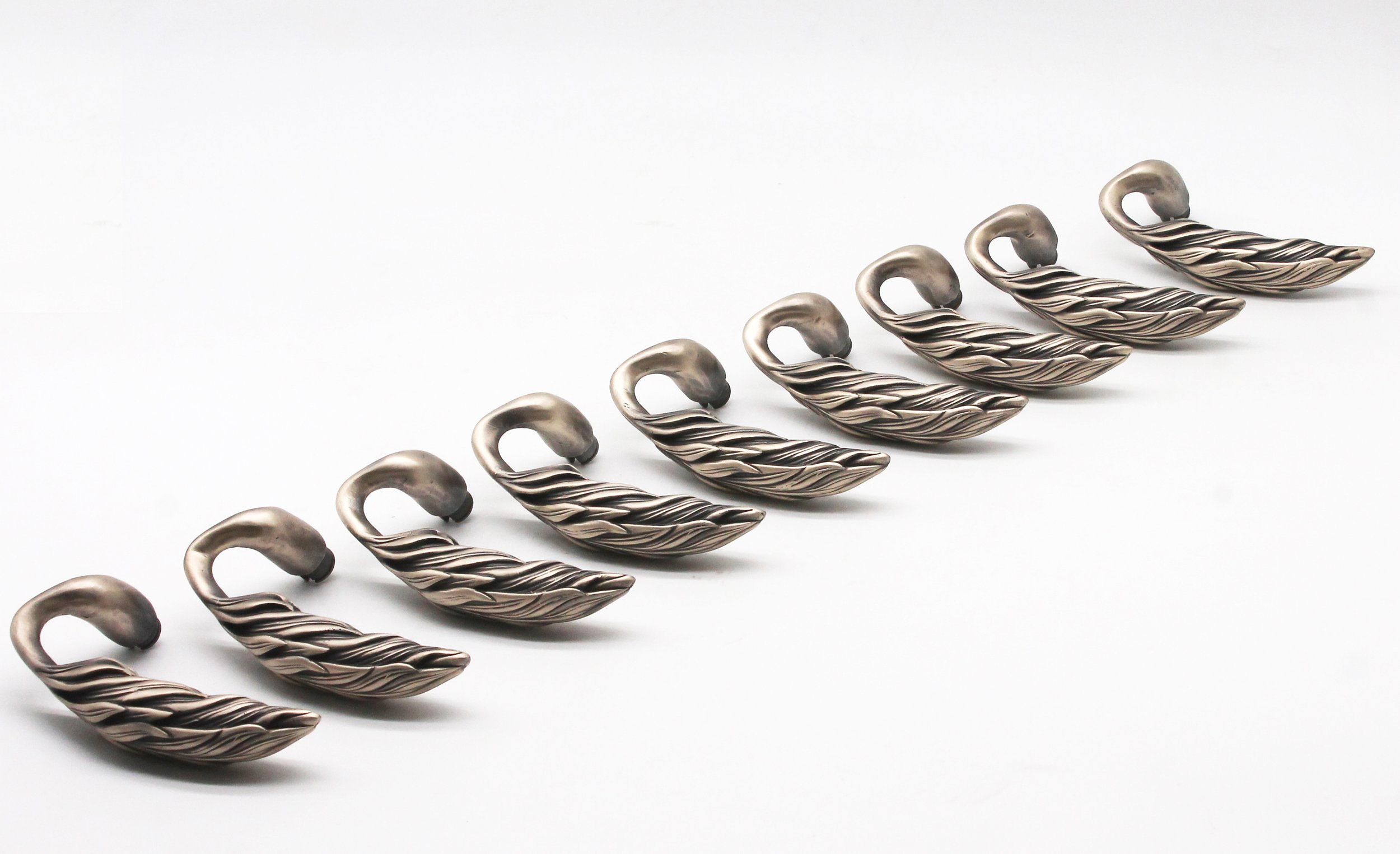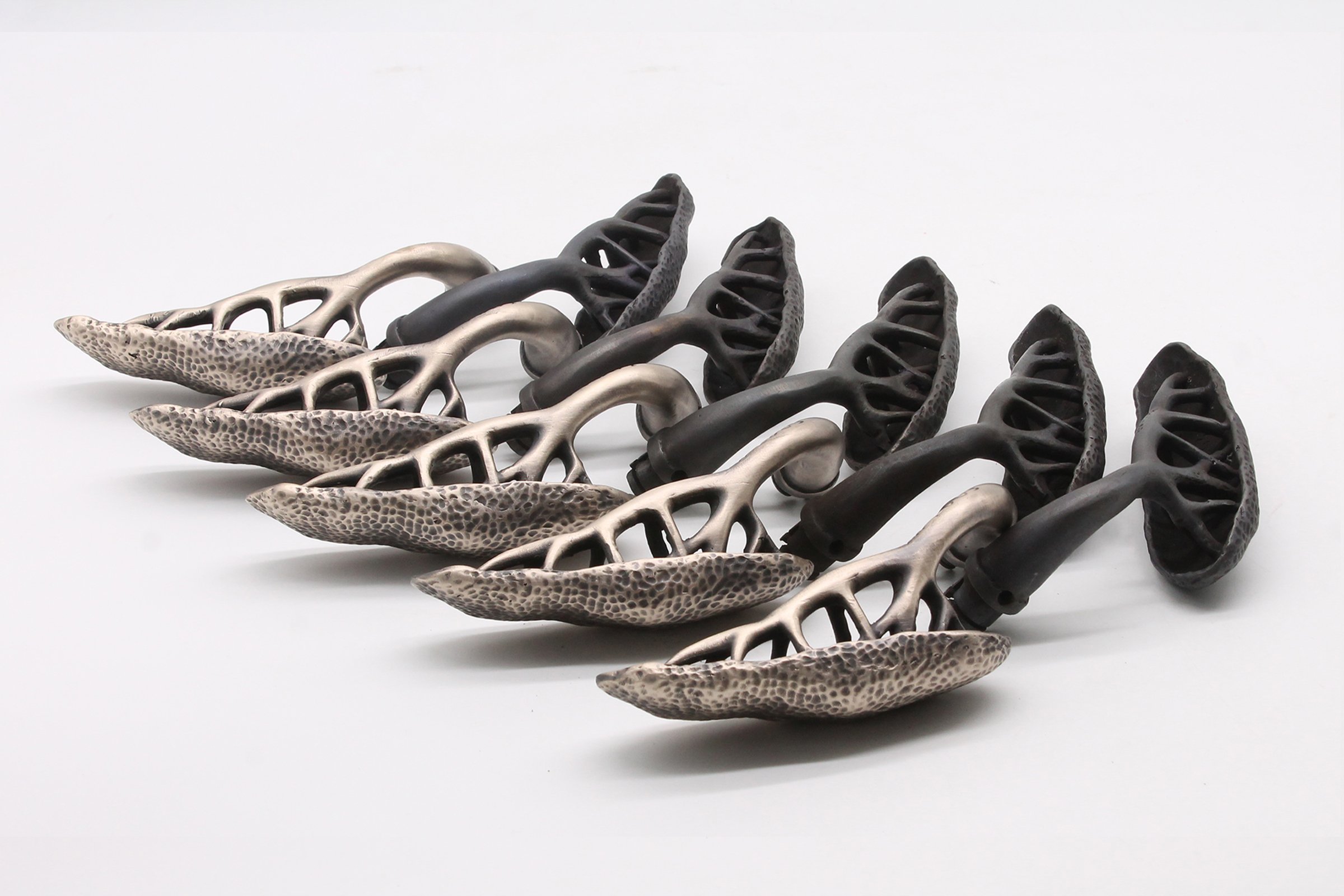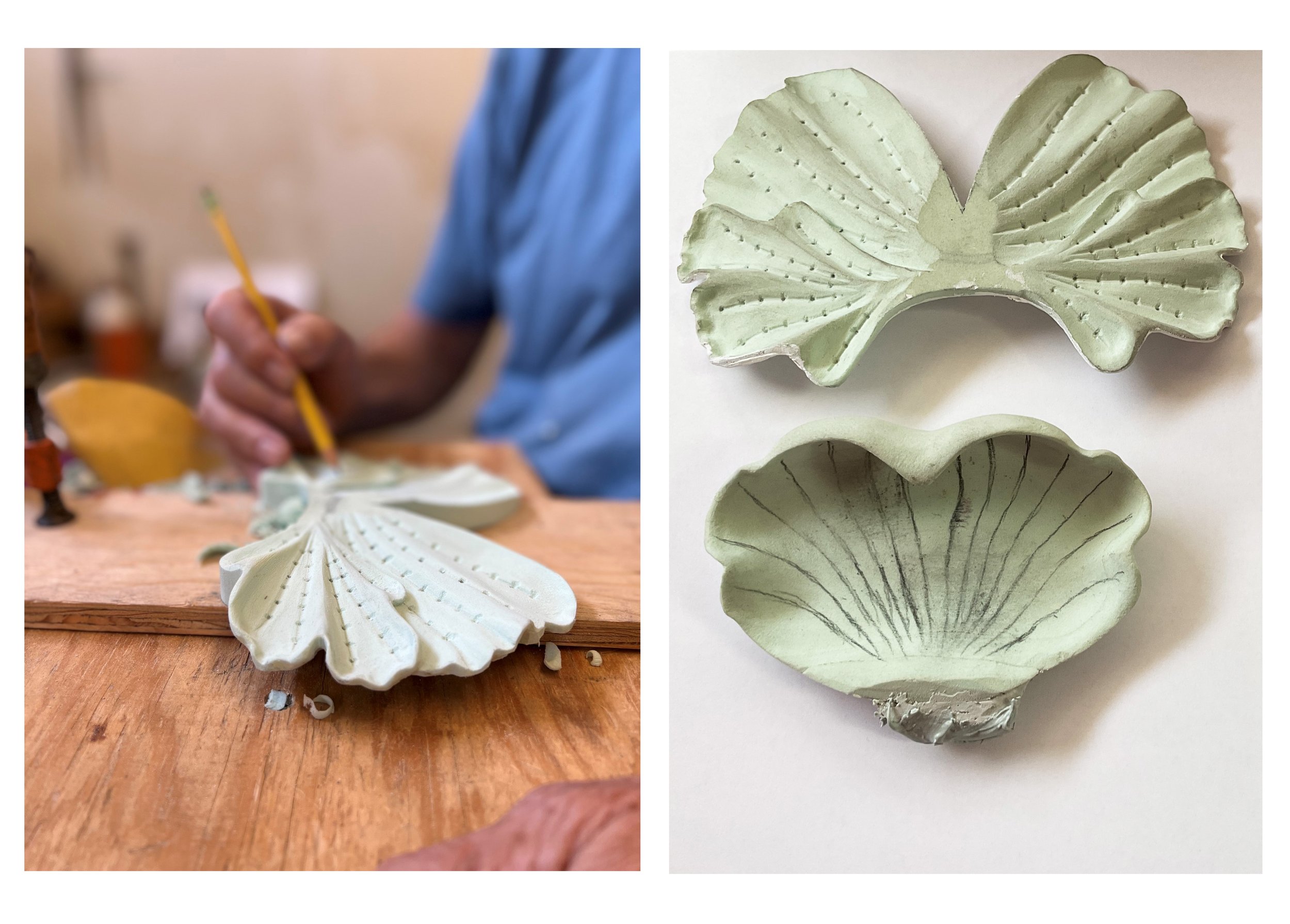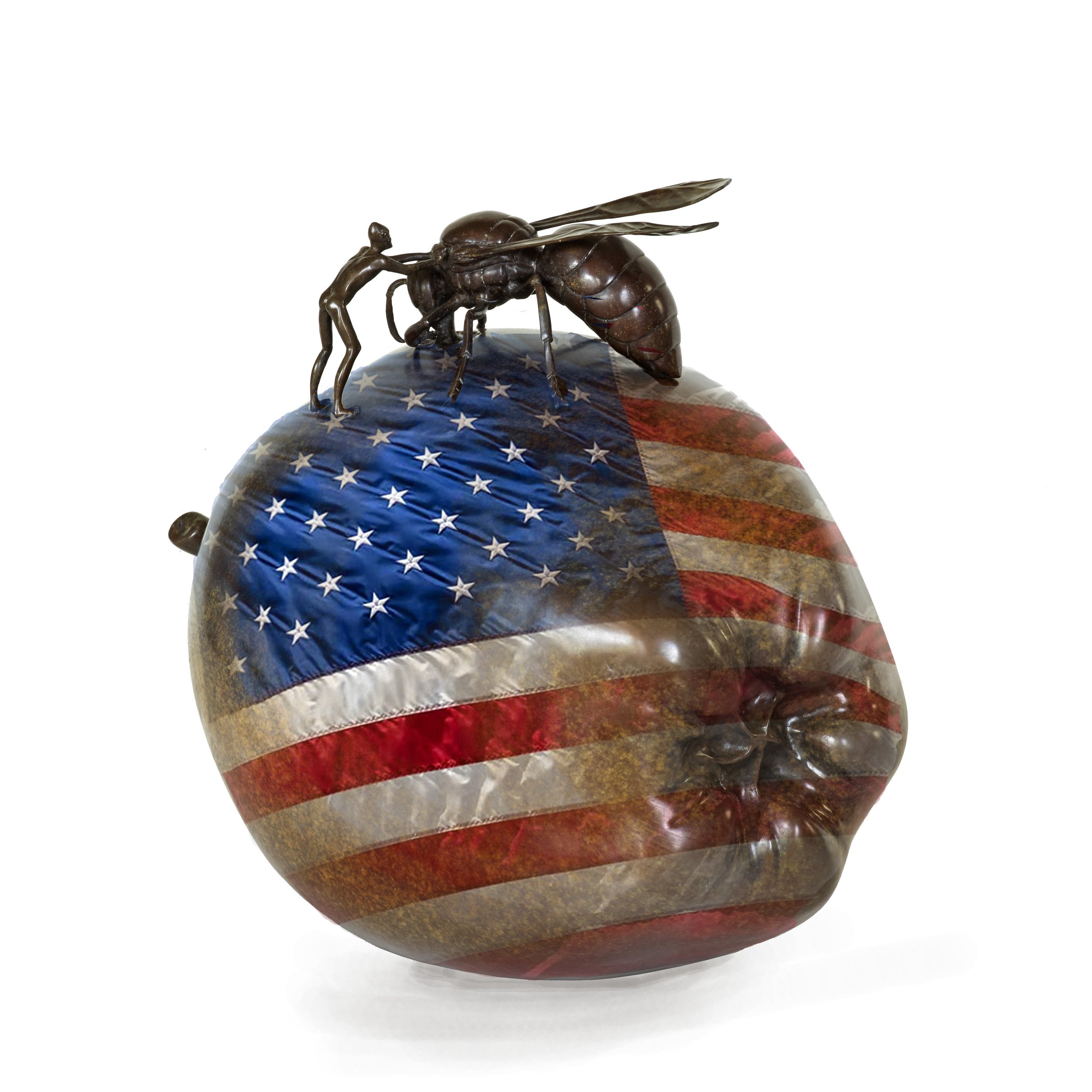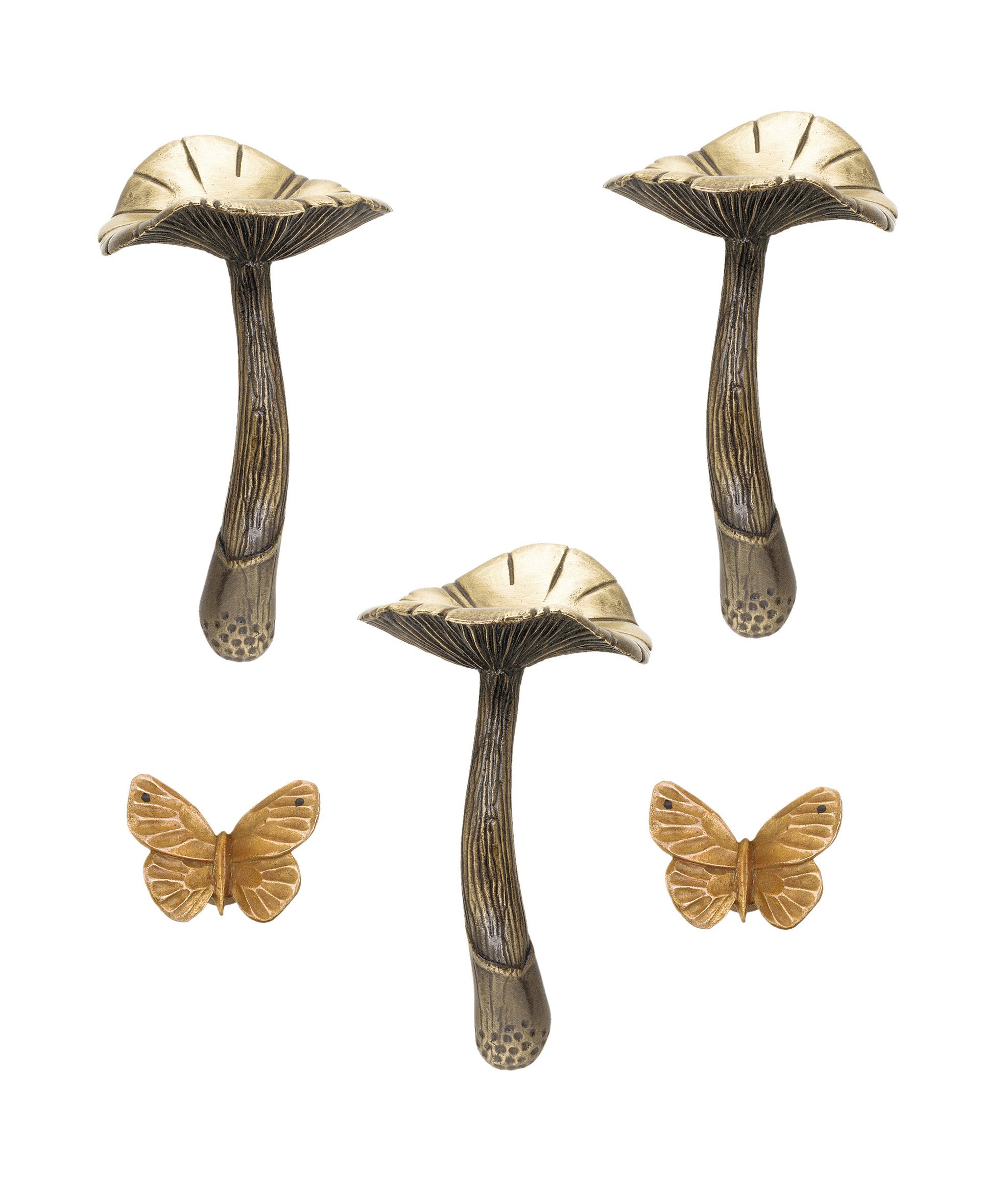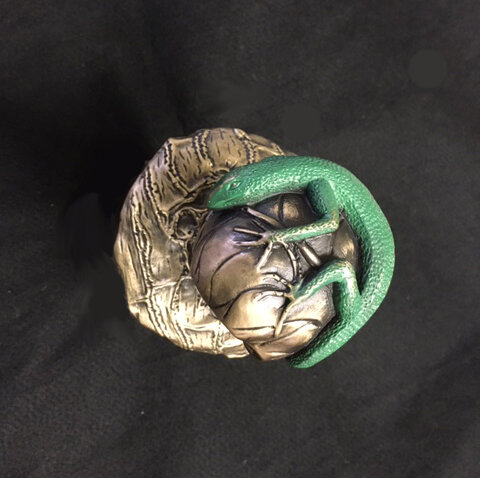The history of the Easter Basket can be traced back to pagan times when the passage of winter and emergence of spring were celebrated with gifts reflecting the arrival of brighter days. As a child I was not aware of the Easter Basket but was very aware of chocolate Easter eggs often filled with very sweet centers.
In the tradition of celebrating the new growth of spring we have created a non-edible collection of items to fill our basket chosen from the collection of plant cabinet pulls and Netsuke door knobs.
The plants that made up the basket collage are shown below. The center sycamore leaves and button mushroom are part of the flower and leaf collection.





